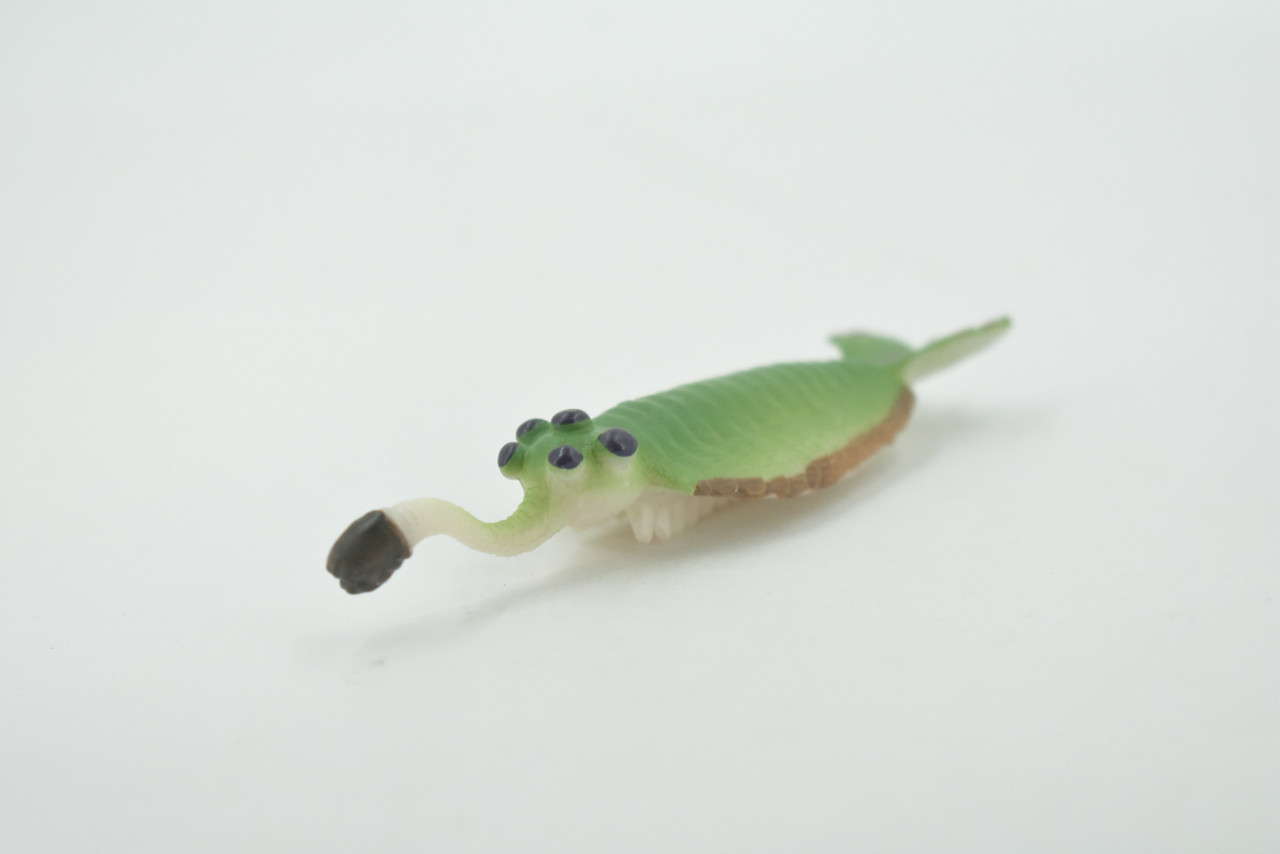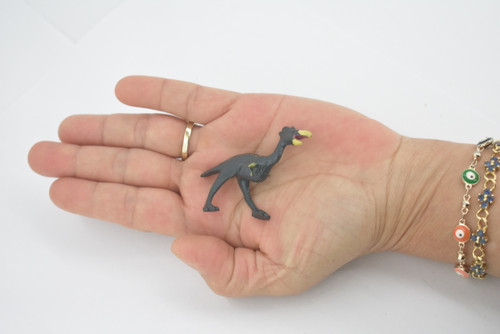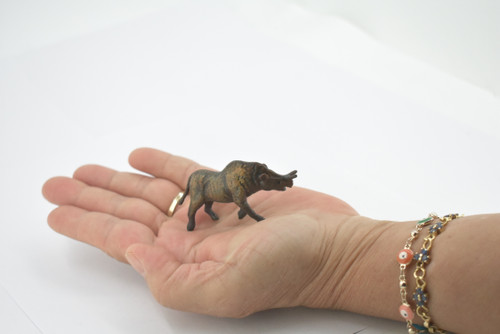Product Description
This Opabinia, 3 1/2" figure includes hand painted features to give it realistic details that are true to natural anatomy. This figure is considered a high quality replica. Highest Quality Natural Rubber.
Opabinia was a bizarre-looking arthropod that lived during the Cambrian about 505 million years ago. The species was named after Opabin Pass. A mountain pass between Mt. Hungabee and Mt. Biddle, located in British Columbia. The creature was a slender, soft-bodied arthropod with a total length of about 2.8 inches (7 cm). Generally, its body is divided into a head, a segmented trunk, and a fan-like tail. The lack of mineralized armor meant scientists produced different interpretations of how the animal might have looked. Opabinia regalis is an extinct, stem group arthropod found in the Middle Cambrian Burgess Shale Lagerstätte (505 million years ago) of British Columbia. Opabinia was a soft-bodied animal, measuring up to 7 cm in body length, and its segmented trunk had flaps along the sides and a fan-shaped tail. The head shows unusual features: five eyes, a mouth under the head and facing backwards, and a clawed proboscis that probably passed food to the mouth. Opabinia probably lived on the seafloor, using the proboscis to seek out small, soft food. Fewer than twenty good specimens have been described; 3 specimens of Opabinia are known from the Greater Phyllopod bed, where they constitute less than 0.1% of the community. Opabinia looked so strange that the audience at the first presentation of Whittington's analysis laughed. The length of Opabinia regalis from head (excluding proboscis) to tail end ranged between 4 centimeters (1.6 in) and 7 centimeters (2.8 in). One of the most distinctive characters of Opabinia is the hollow proboscis, whose total length was about one-third of the body's and projected down from under the head. The proboscis was striated like a vacuum cleaner's hose and flexible, and it ended with a claw-like structure whose terminal edges bore 5 spines that projected inwards and forwards. Opabinia, another small Cambrian critter, grew to eight centimeters (about three inches). This creature likely aught prey with the grasping claws of its long, tube-like proboscis and then stuffed the food into its mouth — much as an elephant uses its trunk. Opabinia may have even used its proboscis to pull worms out of their burrows.
Thanks for visiting Collectible Wildlife Gifts, the leading provider of high-quality, lifelike animal Designs and gifts! We work hard to ensure we have a diverse range of products. Each product is inspected for their quality craftsmanship. Whether you're searching for a great gift or seeking educational designs for displays, we’ve got you covered.
At Collectible Wildlife Gifts, our products appeal to a wide range of customers, including family, friends, and educators. Our products are trusted and used by professional organizations as well including aquariums, zoos, and movie studios.
Our extensive line of products boasts everything from plush sharks to educational animal growth cycles. Our products bring joy to recipients, and serve as valuable educational resources, sparking curiosity and fostering learning.
Discover the wonders of the natural world with Collectible Wildlife Gifts. Browse our collection today!

























